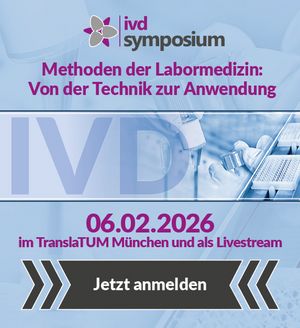Literatur 1. Greinacher A, Selleng S. How I evaluate and treat thrombocytopenia in the intensive care unit patient. Blood 2016; 128:3032–304
2. Greinacher A. CLINICAL PRACTICE. Heparin-Induced Thrombocytopenia. N Engl J Med 2015; 373:252–61
3. Haileb L, Rao R, Arepally GM, Keire D, Verthelyib D, Sommersa CD. PF4-HIT antibody (KKO) complexes activate broad innate immune and inflammatory responses. Throm Res 2017; 159:39–47
4. Krauel K, Poetschke C, Weber C et al. Platelet factor 4 binds to bacteria, inducing antibodies cross-reacting with the major antigen in heparin-induced thrombocytopenia. Blood 2011; 117:1370–8
5. Brandt S, Krauel K, Jaax M, Renné T, Helm CA, Hammerschmidt S, Delcea M, Greinacher A. Polyphosphates form antigenic complexes with platelet factor 4 (PF4) and enhance PF4-binding to bacteria. Thromb Haemost 2015; 114:1189–98
6. Warkentin TE, Basciano PA, Knopman J, Bernstein RA. Spontaneous heparin-induced thrombocytopenia syndrome: 2 new cases and a proposal for defining this disorder. Blood 2014; 123:3651–4
7. Warkentin TE. Delayed-onset HIT. Curr Hematol Rep 2002; 1:63–72
8. Seidel H, Kolde HJ. Monitoring of Argatroban and Lepirudin. Clin Appl Thromb Hemost 2017 Jan 1
9. Cuker A, Gimotty PA, Crowther MA, Warkentin TE. Predictive value of the 4Ts scoring system for heparin-induced thrombocytopenia: a systematic review and meta-analysis. Blood 2012; 120:4160–7
10. Morel-Kopp MC, Mullier F, Gkalea V, Bakchoul T, Minet V, Elalamy I, Ward CM and for the Subcommittee on Platelet Immunology. Heparin-induced multi-electrode aggregometry method for heparin-induced thrombocytopenia testing: communication from the SSC of the ISTH. J Thromb Haemost 2016; 14:2548–52
11. Amiral J, Bridey F, Wolf M, Boyer-Neumann C, Fressinaud E, Vissac AM, Peynaud-Debayle E, Dreyfus M, Meyer D. Antibodies to macromolecular platelet factor 4-heparin complexes in heparin-induced thrombocytopenia: a study of 44 cases. Thromb Haemost 1995; 73:21–8
12. Husseinzadeh HD, Gimotty PA, Pishko AM, Buckley M, Warkentin TE, Cuker A. Diagnostic accuracy of IgG-specific versus polyspecific enzyme-linked immunoassays in heparin-induced thrombocytopenia: a systematic review and meta-analysis. J Thromb Haemost 2017; 15:1203–12
13. Legnani C, Cini M, Pili C, Boggian O, Frascaro M, Palareti G. Evaluation of a new automated panel of assays for the detection of anti-PF4/heparin antibodies in patients suspected of having heparin-induced thrombocytopenia. Thromb Haemost 2010; 104:402–9
14. Van Hoecke F, Devreese K. Evaluation of two new automated chemiluminescent assays (HemosIL® AcuStar HIT-IgG and HemosIL® AcuStar HIT-Ab) for the detection of heparin-induced antibodies in the diagnosis of heparin-induced thrombocytopenia. Int J Lab Hematol 2012; 34:410–6
15. Nellen V, Sulzer I, Barizzi G, Lämmle B, Alberio L. Rapid exclusion or confirmation of heparin-induced thrombocytopenia: a single-center experience with 1,291 patients. Haematologica 2012; 97:89–97
16. Kolde HJ, Dostatni R, Mauracher S. Rapid and simple IgG specific test for the exclusion of heparin induced thrombocytopenia (HIT). Clin Chem Lab Med 2011; 49:2065–8
17. Sachs UJ, von Hesberg J, Santoso S, Bein G, Bakchoul T. Evaluation of a new nanoparticle-based lateral-flow immunoassay for the exclusion of heparin-induced thrombocytopenia (HIT). Thromb Haemost 2011; 106:1197–202
18. Leroux D, Hezard N, Lebreton A, Bauters A, Suchon P, de Maistre E, Biron C, Huisse MG, Ternisien C, Voisin S, Gruel Y, Pouplard C. Prospective evaluation of a rapid nanoparticle-based lateral flow immunoassay (STic Expert® HIT) for the diagnosis of heparin-induced thrombocytopenia. Br J Haematol 2014; 166:774–82
19. Kolde HJ, Habrecht U, von Hesberg J, Panzer S, Seidel H, Bakchoul T, Sachs UJ. Multicentric validation of a rapid assay for heparin-induced thrombocytopenia with different specimen types. Blood Coagul Fibrinolysis 2014; 25:6–9zurück


